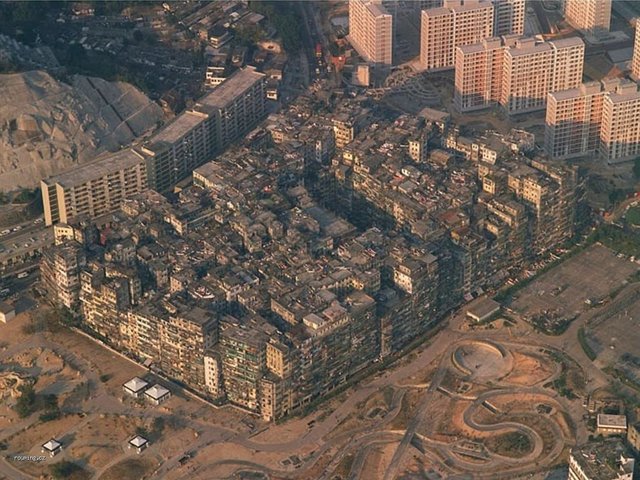
I recently came to the knowledge of the existence of the so called City of Darkness, one the most crowded housing spaces in the history of urban development (or it's absence).
Built on a measly 126 x 213 meter piece of land, it was one of the territories that Great Britain had allowed China to keep, within Hong Kong. This awkward territorial configuration is one of the main factors that made the city what it came to be.
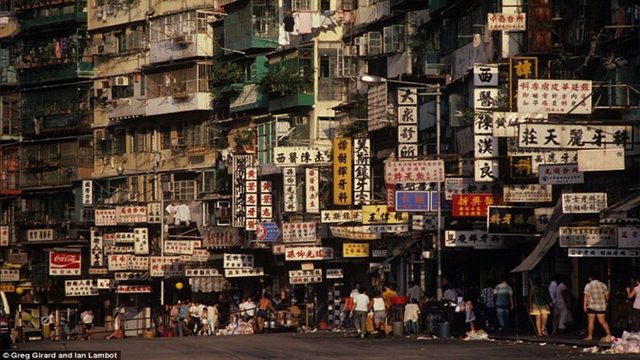
t was pretty common to find unlicensed doctors and dentists, as well as brothels, heroin dens and casinos.
Absence of any kind of health and sanitary inspection, allowed for very low cost food production such as noodle factories, butcher shops, among others. Dog meat was also among the items sold at street level.
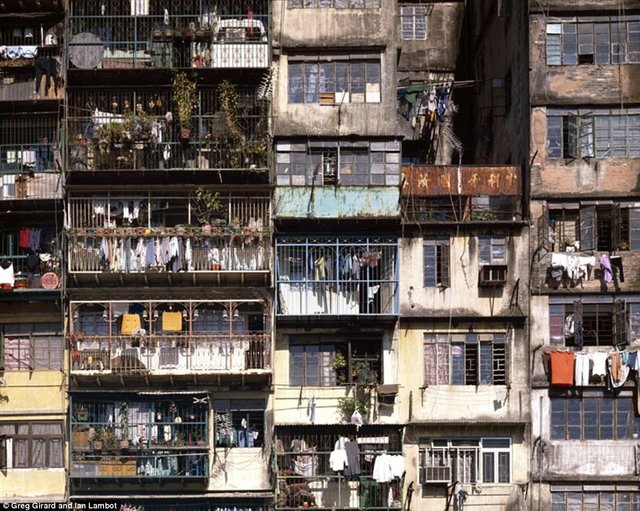
Between the 70's and the 90's, due to it's quasi-anarchy status, absence of health inspection and it's consequent low rent prices (as low as $4 USD a month), the Walled City came to be occupied by low income families and questionable businesses.
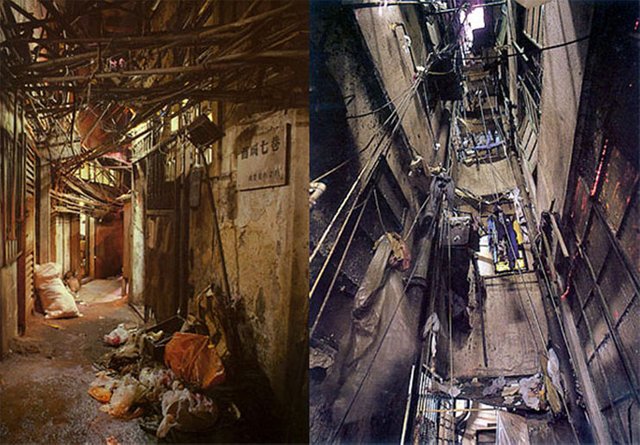
The 33 intertwined buildings that made up the city, were built without the involvement of a single architect. Occupants would agree on vertical expansions and hydraulic installations although, generally, electrical equipment would be installed on the outside to prevent fires.
Among the few regulations the Walled City of Kowloon had, was the limitation of building vertically up to 14 stories, due to the difficulties it imposed to incoming airplanes to the nearby Kai Tak Airport.
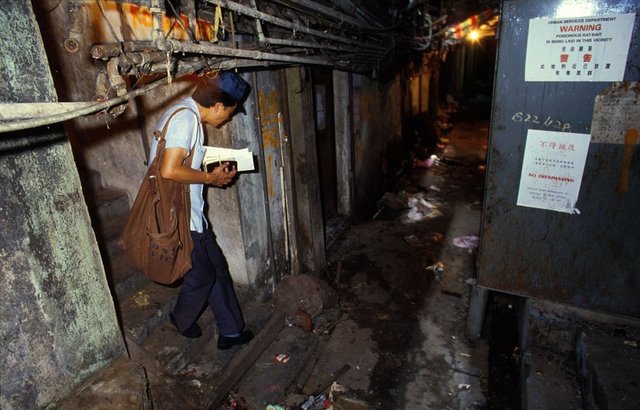
Even among this chaos, you could still navigate the complex in a semi-comprehensible manner. Still, they had mail deliveries made to each door step.
Also, it was not uncommon to live in a home with no windows at all.
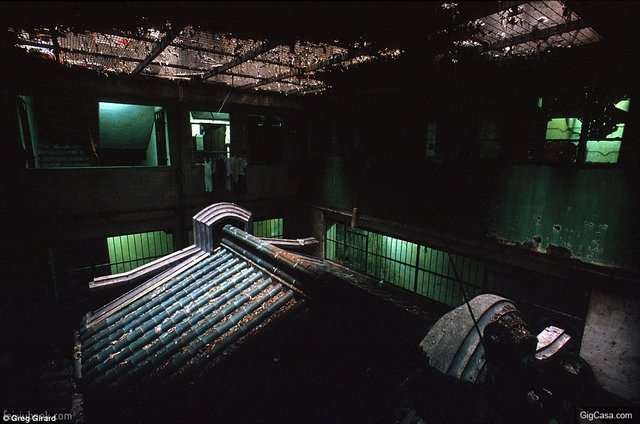
During the rapid vertical expansion of the city, many underlying structures were either removed, or built on top. Pictured, is the city's Tin Hau Temple, which has been completely surrounded by homes, hallways and topped by a fence to prevent incoming trash.
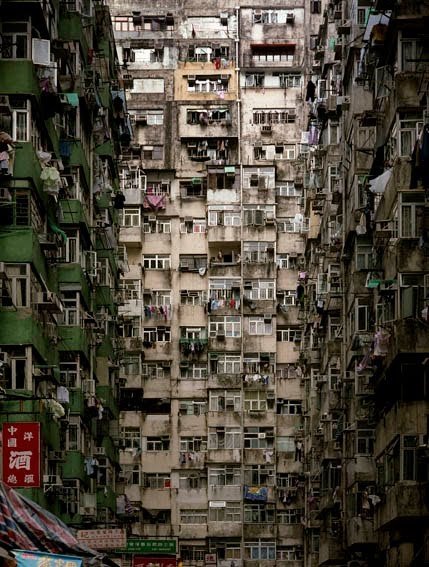
Even with the high levels of crime within the complex, the people that lived here considered their lives to be very peaceful.
For criminals, on the other hand, the Walled City was a kind of a safe haven where local police could not intrude due to the awkward jurisdiction.
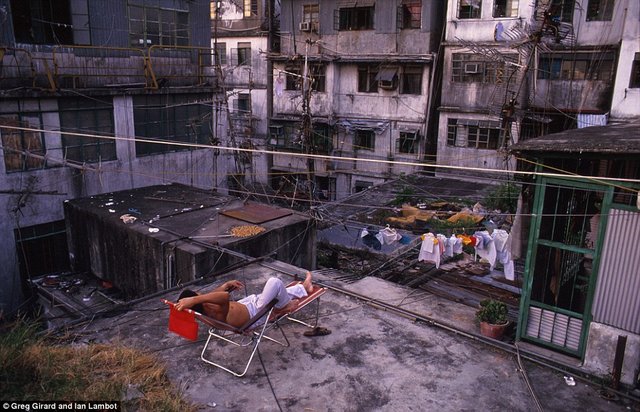
Here, rooftop access was a privilege. Going atop was an easy way to escape daily claustrophobia and get a breath of fresh air. Plus unlimited limb locomotion.
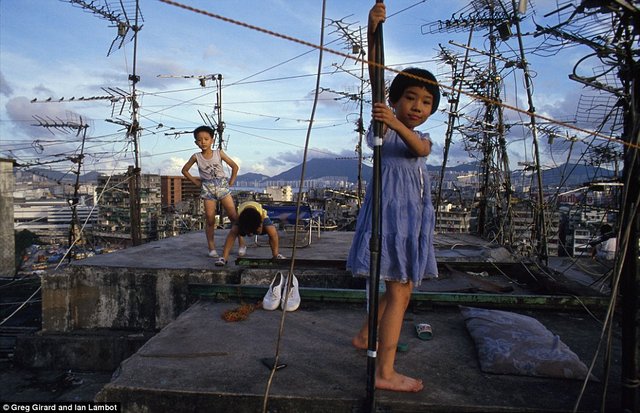
Within the buildings there were kindergartens and primary schools, that we're ran by organizations such as the Salvation Army.
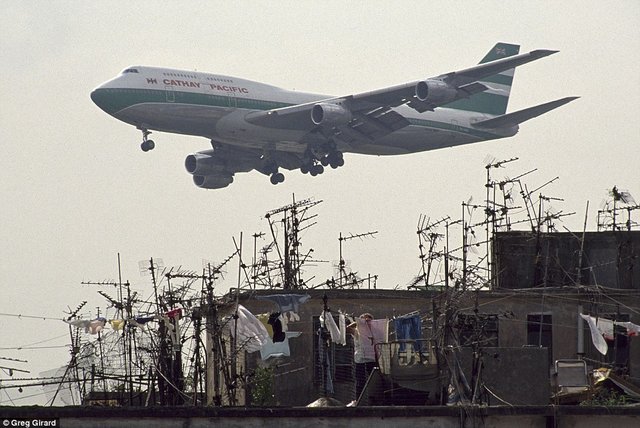
Rooftops packed with forests of antennas were a characteristic feature here, where tenants sought roof space to get TV and radio signals into their homes.
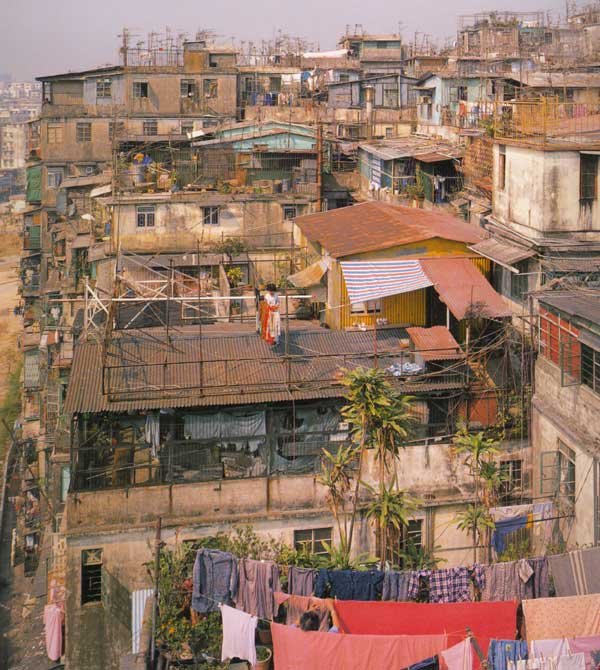
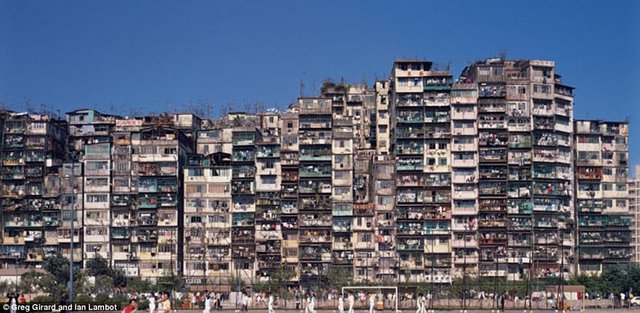
At the start of the 90's, the british government considered the place an embarassment, and began planning, along with the chinese, the eviction of the City of Darkness.
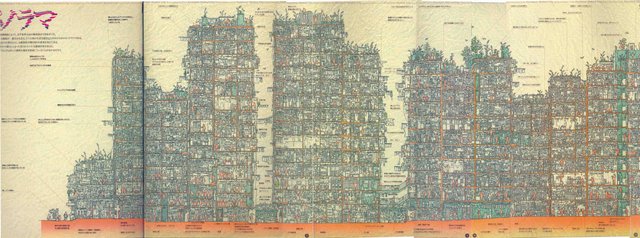
Before the destruction began, a group of japanese urban explorers made this very detailed and, IMHO, beautiful, map of a cross section of the Walled City.
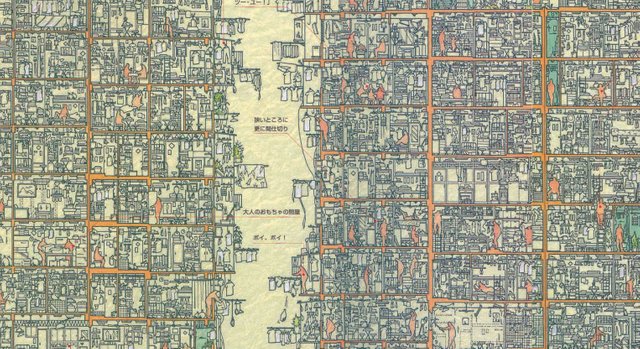
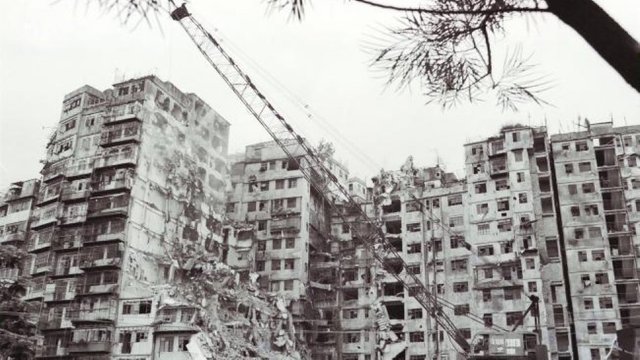
Demolition of the 33 buildings began in 1993, after the eviction and compensation of the over 50,000 occupants. The chinese government spent over $350 million USD in payments for compensation.
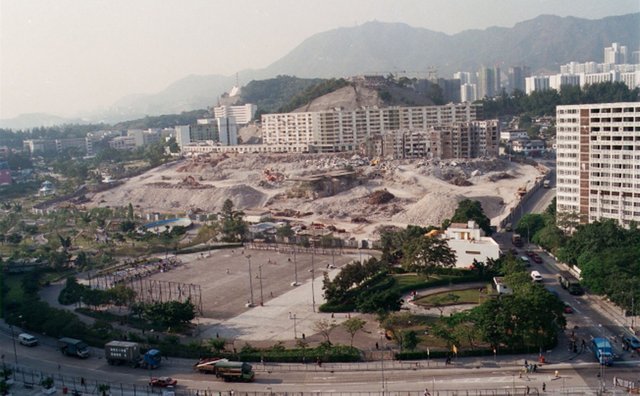
After almost a century of trying to clear the land where it resided, the government had finally done it. (Multiple governments and regimes had tried this since 1899. The place had started as a small fort. More on that story here: http://www.scmp.com/magazines/post-magazine/article/1581649/kowloon-walled-citys-fight-exist ).
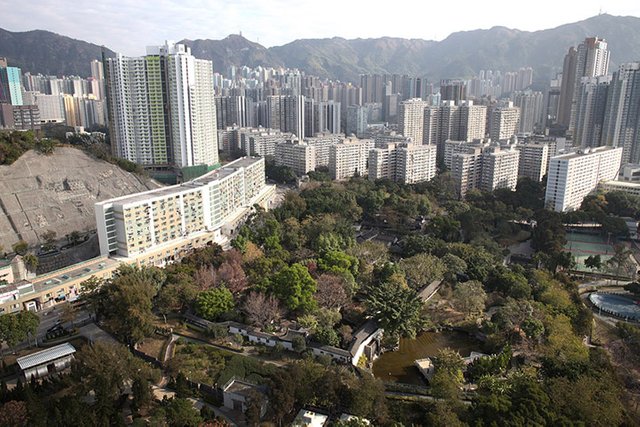
And by 1995, the location had been turned into a typical chinese garden.
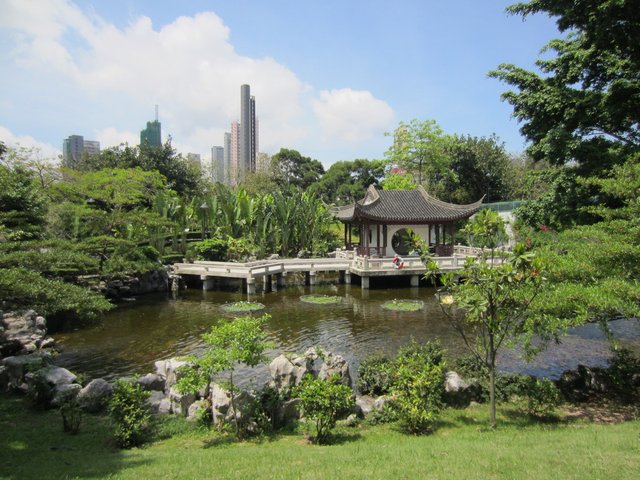
Pretty, but not too impressive.
Definitely not even as close as interesting.
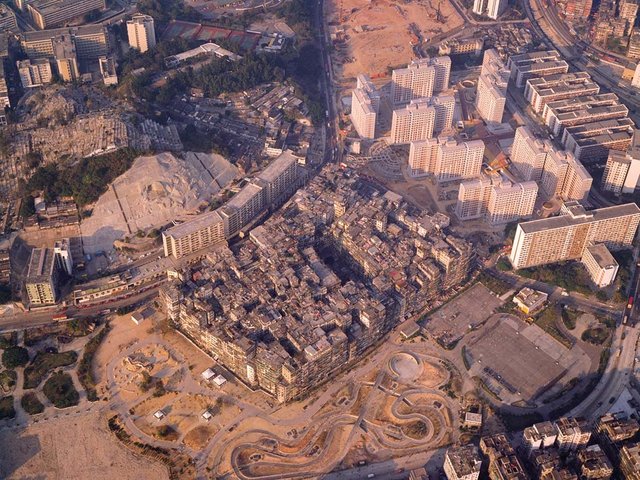
The Walled City of Kowloon is believed to had peaked at a population of over 50,000, that within the space it occupied, would give it a density of aprox. 1.86 Million people per km2.
In comparison, the closest population density for a city district at the moment goes to Lalbagh Thana, Bangladesh, with 168,150 inhabitants per km2.
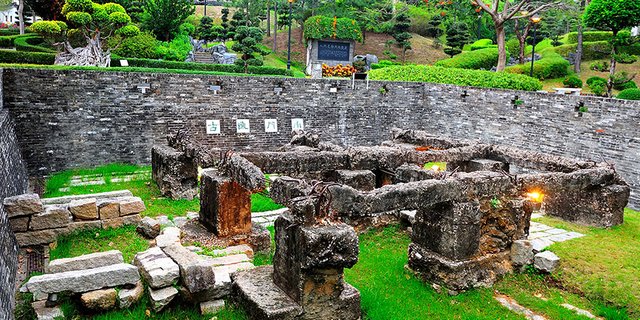
Of the small universe that was the City of Darkness, it's one of the more interesting cases for urban development of the era.
I hope you enjoyed, as much as I did, finding this little piece of a very small, and very packed, place in history.
@originalworks
Downvoting a post can decrease pending rewards and make it less visible. Common reasons:
Submit
@OriginalWorks Mention Bot activated by @raclariu. The @OriginalWorks bot has determined this post by @raclariu to be original material and upvoted it!
To call @OriginalWorks, simply reply to any post with @OriginalWorks in your message!
For more information, Click Here!
Downvoting a post can decrease pending rewards and make it less visible. Common reasons:
Submit
What a fascinating story. I felt claustrophobic just reading about this place. It is so sad how imaginary lines drawn on the earth force people into such living conditions. Thanks for sharing.
Together, let’s build a wonderful
💙 Steemit Community 💙
Your friend, @faceofbear
Downvoting a post can decrease pending rewards and make it less visible. Common reasons:
Submit
Congratulations @raclariu! You have completed some achievement on Steemit and have been rewarded with new badge(s) :
Click on any badge to view your own Board of Honor on SteemitBoard.
For more information about SteemitBoard, click here
If you no longer want to receive notifications, reply to this comment with the word
STOPDownvoting a post can decrease pending rewards and make it less visible. Common reasons:
Submit